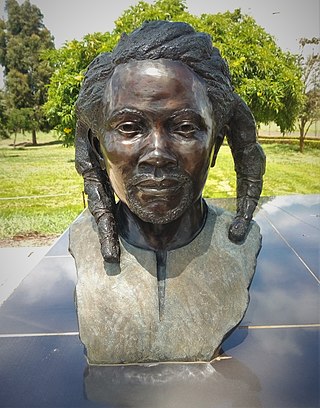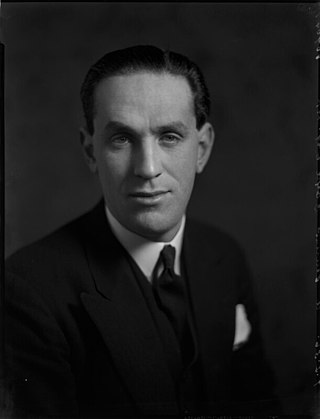
A part of Eastern Africa, the territory of what is known as Kenya has seen human habitation since the beginning of the Lower Paleolithic. The Bantu expansion from a West African centre of dispersal reached the area by the 1st millennium AD. With the borders of the modern state at the crossroads of the Bantu, Nilo-Saharan and Afro-Asiatic ethno-linguistic areas of Africa, Kenya is a truly multi-ethnic state. The Wanga Kingdom was formally established in the late 17th century. The kingdom covered from the Jinja in Uganda to Naivasha in the East of Kenya. This is the first time the Wanga people and Luhya tribe were united and led by a centralized leader, a king, known as the Nabongo.

The Kenya African National Union (KANU) is a Kenyan political party that ruled for nearly 40 years after Kenya's independence from British colonial rule in 1963 until its electoral loss in 2002. It was known as Kenya African Union (KAU) from 1944 but due to pressure from the colonial government, KAU changed its name to Kenya African Study Union (KASU) mainly because all political parties were banned in 1939 following the start of the Second World War. In 1946 KASU rebranded itself into KAU following the resignation of Harry Thuku as president due to internal differences between the moderates who wanted peaceful negotiations and the militants who wanted to use force, the latter forming the Aanake a forty, which later became the Mau Mau. His post was then occupied by James Gichuru, who stepped down for Jomo Kenyatta in 1947 as president of KAU. The KAU was banned by the colonial government from 1952 to 1960. It was re-established by James Gichuru in 1960 and renamed KANU on 14 May 1960 after a merger with Tom Mboya's Kenya Independence Movement.

The Mau Mau rebellion (1952–1960), also known as the Mau Mau uprising, Mau Mau revolt, or Kenya Emergency, was a war in the British Kenya Colony (1920–1963) between the Kenya Land and Freedom Army (KLFA), also known as the Mau Mau, and the British authorities. Dominated by Kikuyu, Meru and Embu fighters, the KLFA also comprised units of Kamba and Maasai who fought against the European colonists in Kenya, the British Army, and the local Kenya Regiment.

The Kikuyu are a Bantu ethnic group native to East Africa Central Kenya. At a population of 8,148,668 as of 2019, they account for 17.13% of the total population of Kenya, making them Kenya's largest ethnic group.

Dedan Kimathi Waciuri was the senior military and spiritual leader of the Kikuyu rebels involved in the Mau Mau Uprising. Widely regarded as a revolutionary leader, he led the armed military struggle against the British colonial regime in Kenya in the 1950s until his capture in 1956 and execution in 1957. Kimathi is credited with leading efforts to create formal military structures within the Mau Mau, and convening a war council in 1953. He, along with Baimungi M'marete, Musa Mwariama, General China and Muthoni Kirima, was one of the Field Marshals.

The Kenya African Union (KAU) was a political organization in colonial Kenya, formed in October 1944 prior to the appointment of the first African to sit in the Legislative Council. In 1960 it became the current Kenya African National Union (KANU).

Alan Tindal Lennox-Boyd, 1st Viscount Boyd of Merton, CH, PC, DL, was a British Conservative politician.
Waruhiu Itote, nom de guerreGeneral China, was one of the key leaders of the Mau Mau Uprising (1952–1960) in British Kenya alongside Dedan Kimathi, Stanley Mathenge, Kurito ole Kisio, Musa Mwariama and Muthoni Kirima.
The 1959 Hola massacre was a massacre committed by British colonial forces during the Mau Mau Uprising at a colonial detention camp in Hola, Kenya.
Virginia Edith Wambui Otieno (1936–2011), born Virginia Edith Wambui Waiyaki, who became Wambui Waiyaki Otieno Mbugua after her second marriage, and generally known as Wambui, was born into a prominent Kikuyu family and became a Kenyan activist, politician and writer. Wambui became prominent in 1987 because of a controversial legal fight between her and the clan of her Luo husband Silvano Melea Otieno over the right to bury Otieno. The case involved the tension between customary law and common law in modern-day Kenya in the case of an inter-tribal union. The various legal hearings this case stretched over more than five months and the final verdict suggested that a Kenyan African was presumed to adhere to the customs of the tribe they were born into unless they clearly and unequivocally broke all contact with it. As Otieno retained some rather tenuous links with his clan, they were awarded the right to bury him, ignoring Wambui's wishes. However, Wambui inherited most of her late husband's estate.
The Kikuyu Home Guard was a government paramilitary force in Kenya from early 1953 until January 1955. It was formed in response to insurgent attacks during the Mau Mau Uprising.

Harry Thuku was a Kenyan born in Kiambu, Mitahato village. As a politician, he was one of the pioneers in the development of modern African nationalism in Kenya. He helped found the Young Kikuyu Association and the East African Association before being arrested and exiled from 1922 to 1931. In 1932 he became President of the Kikuyu Central Association, in 1935 founded the Kikuyu Provincial Association, and in 1944 founded the Kenya African Study Union. Opposed to the Mau Mau movement, he later retired to coffee-farming.
The Kapenguria Six – Bildad Kaggia, Kung'u Karumba, Jomo Kenyatta, Fred Kubai, Paul Ngei, and Achieng' Oneko – were six leading Kenyan nationalists who were arrested in 1952, tried at Kapenguria in 1952–53, and imprisoned thereafter in Northern Kenya.
The Swynnerton Plan was a colonial agricultural policy that appeared as a government report in 1954 in Kenya, aiming to intensify the development of agricultural practice in the Kenya Colony. The plan was geared to expanding native Kenyan's cash-crop production through improved markets and infrastructure, the distribution of appropriate inputs, and the gradual consolidation and enclosure of land holdings.
Charity Waciuma is a Kenyan writer, who wrote several novels for adolescents and an autobiographical novel, Daughter of Mumbi (1969). Her work draws on Kikuyu legends and storytelling traditions. In the 1960s Waciuma and Grace Ogot became the first Kenyan women writers to be published in English.

General Sir George Watkin Eben James Erskine was a British Army officer from Hascombe, Surrey. After he graduated from Royal Military College, Sandhurst, Erskine enlisted in the King's Royal Rifle Corps and saw action on the Western Front of World War I. During World War II, he commanded the 7th Armoured Division from 1943 to 1944. After World War II, Erksine commanded counterinsurgency operations against the Kenya Land and Freedom Army (KLFA) during the Mau Mau rebellion.
The Chuka massacre, which happened in Chuka, Kenya, was perpetrated by members of B Company, 5th Battalion, King's African Rifles (KAR) in June 1953 with 20 unarmed people killed during the Mau Mau uprising. The company commander Major G. S. L. Griffiths was found guilty of one murder.
The Kenya Land and Freedom Army (KLFA), also known as the Mau Mau, was a Kenyan insurgent group which fought against British colonial rule in Kenya during the Mau Mau rebellion from 1952 to 1960. Its membership consisted largely of the Kikuyu people. The KFLA was led by Dedan Kimathi for most of its existence. After four years, British forces managed to destroy the KFLA militarily, and Kimathi was captured and executed in 1957. Though the Mau Mau rebellion was ultimately suppressed, it played a major role in achieving Kenyan independence, which occurred in 1963.
John M. Lonsdale is a British Africanist and historian. He is Emeritus Professor of Modern African History at the Centre of African Studies in the Faculty of History at the University of Cambridge. He is a Fellow of Trinity College there. As a schoolboy, he spent three summer holidays during 1953-1956 in Kenya where his father had just taken a job. He read history at Cambridge from 1958 through 1964. In 1956 he started his national service as a subaltern in the King's African Rifles. His first teaching job was in Dar es Salaam in 1964. Lonsdale studied the modern history of Kenya extensively and won the Outstanding African Studies Award of the African Studies Association of the United Kingdom in 2006.









